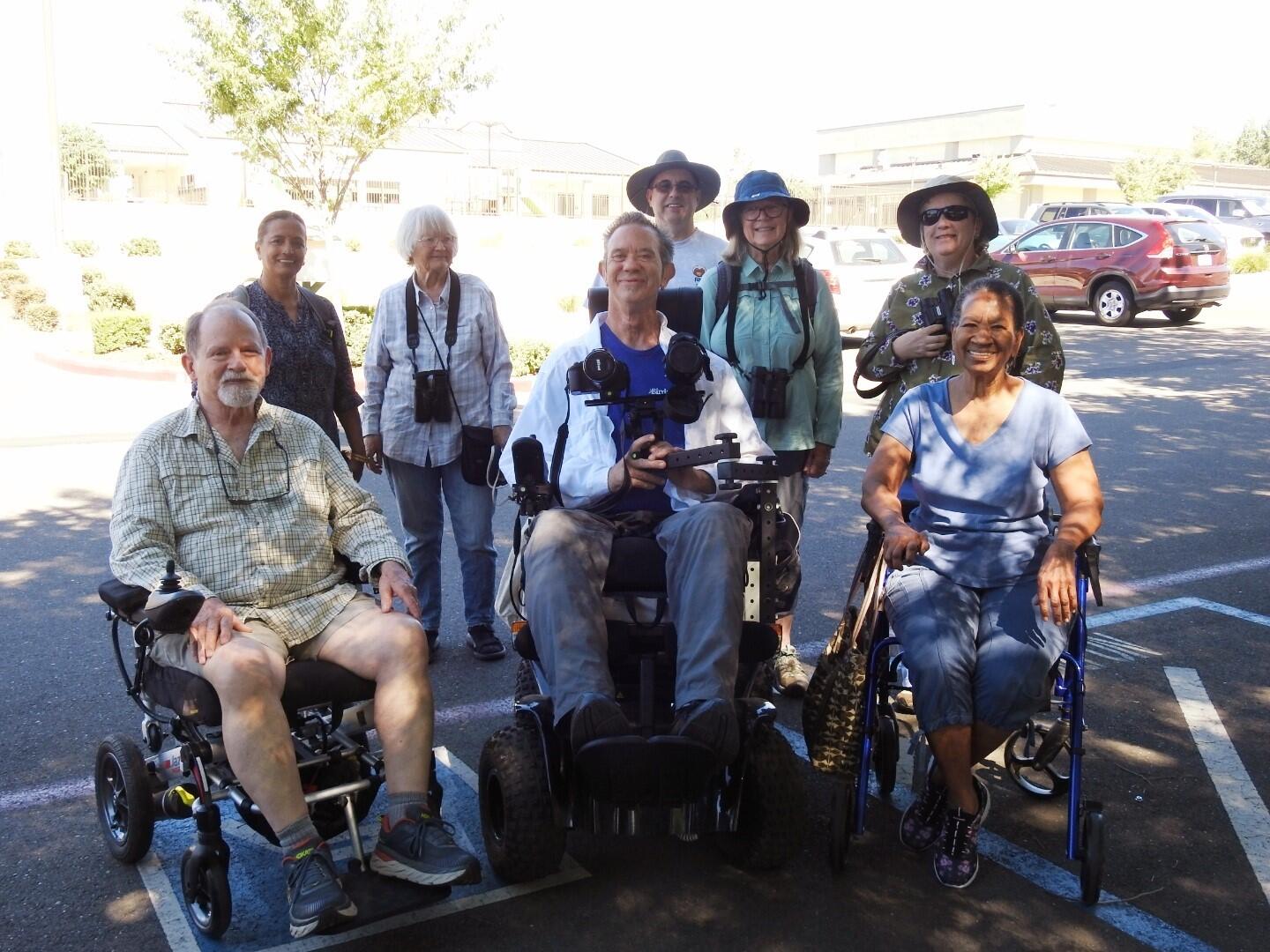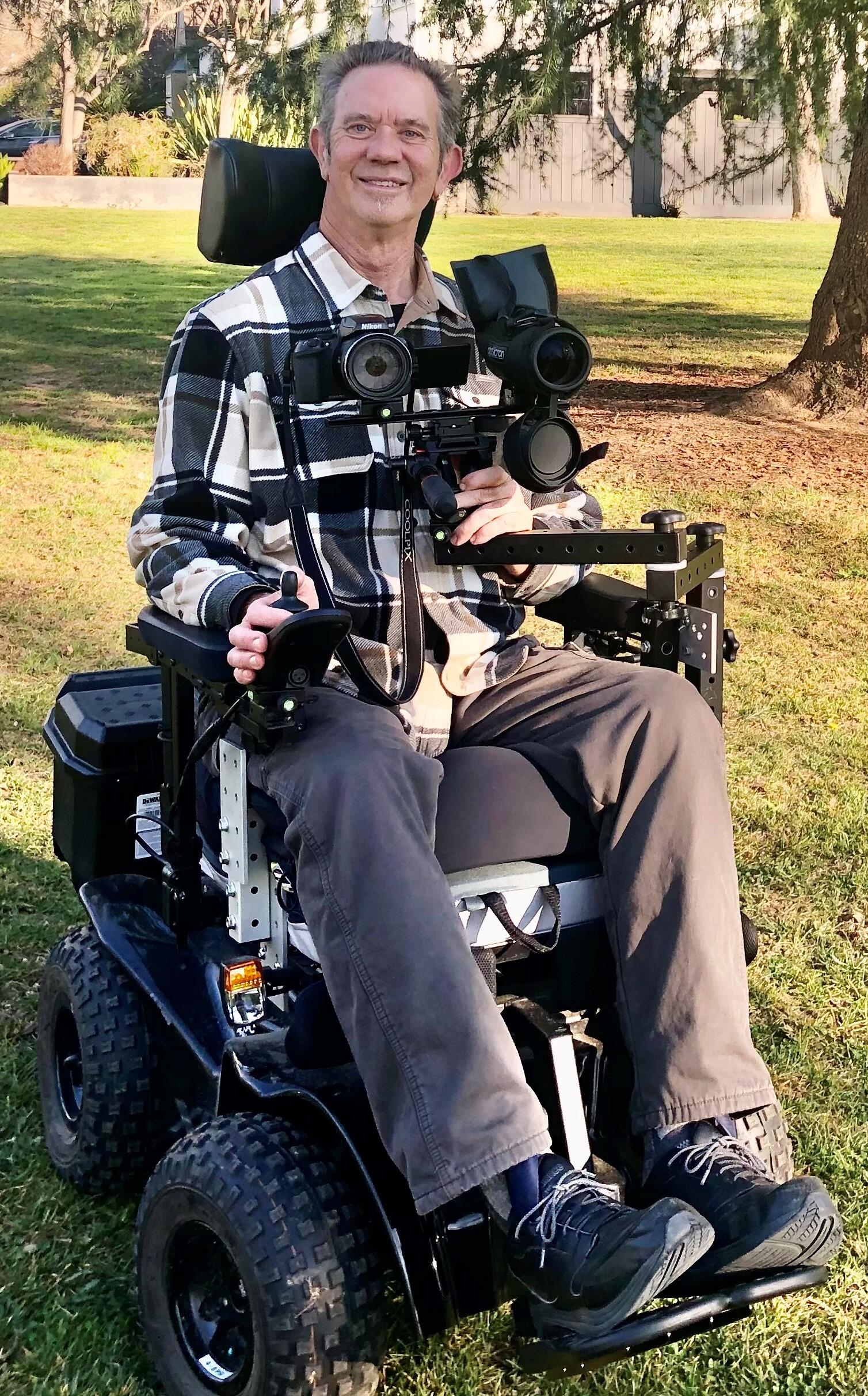Working with the Sacramento Audubon chapter, Paul Miller has started leading local birding trips for those with physical limitations. He has also identified and documented multiple birding locations within the Sacramento Region that are truly accessible.
The word “accessible” has different meanings depending upon your physical abilities. For those using mobility devices such as wheeled walkers or wheelchairs, accessible typically means areas with wide-level paved or hard-packed gravel pathways. Narrow trails or even small obstacles like a two-inch step, rocks, ruts, or exposed tree roots can be a major impediment. Agencies that construct accessible facilities rely on detailed ADA standards, that ensure access for everyone, including buildings. However, many facilities have been constructed over the years that do not meet these standards, resulting in limited access for some users.
His latest accessible birding trip was along the Humbug Willow Creek Trail, located in Folsom. The trip had eight participants, including two long-time Sacramento Audubon members with physical challenges. One used a seated wheeled walker, and the other an electric wheelchair provided by the Paul. Both were lifelong birders who had not been birding for a while and greatly enjoyed being back out with our sacred birds.

The group also included two visitors from India who were visiting family. They were very impressed by the well-designed and maintained trail system that is not common in India. In total, the group saw or heard eighteen species including an Ash-throated Flycatcher, Bewick’s Wren, and Spotted Towhee. The creek is also home to many Red-winged Blackbirds that serenaded the group with their eclectic songs during the visit.
Birding came into Paul’s life shortly after he retired from a career in transportation planning and traffic engineering. He attended an eight-week birding seminar and field trip class and was hooked. Having spent much of his life outdoors, birding was a perfect fit for his passions. However, he soon realized that his ever-increasing physical limitations resulting from his muscular dystrophy were going to make birding difficult. The inability to raise binoculars to his eyes was the first clue.
Facioscapulohumeral muscular dystrophy (FSHD) is a slowly progressive form of muscular dystrophy which results in the weakening and atrophy of muscles. Having been diagnosed at age sixteen, Paul grew up with a “can-do” attitude. His symptoms only significantly materialized about ten years ago, and before that, he was very physically active. Now at sixty, he is very thankful that he pushed the limits throughout his life.

For several years Paul relied on a binocular/monopod set up along with a wheeled walker for birding. But the art/sport/science of birding is one of quick movements and long walks over uneven surfaces. Especially if photography is part of the practice. His joy of watching birds was overshadowed by the work of pushing the walker and getting the monopod/binocular set up in time to see the birds. So he decided to first build and then purchase a power wheelchair, along with and mobility van. In addition, using his can-do attitude he also built an articulated arm on the wheelchair to support both his spotting scope and camera. You can read more about Paul’s crazy home-built adaptive equipment journey here.
Fast forward to today and Paul is President of the Sacramento Audubon. He has worked closely with the non-profit organization Birdability.org, which with assistance from the National Audubon Society, has developed accessible and inclusive birding guidelines along with an accessibility field survey protocol. The survey, and associated online mapping tool, facilitate documenting the levels of accessibility for popular birding sites across the world. The Birdability survey was designed as a crowd-sourcing tool and is available to anyone. You can learn more about the survey here.
Paul has created a website to share his story, along with his adaptive optic creations. He recently built an electric motorized pan/tilt/zoom scope for a fellow birder who lives in Austin. You can read about the story here. Anyone interested in learning more about his work, or needing assistance on adaptive equipment can contact Paul here.



